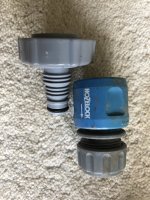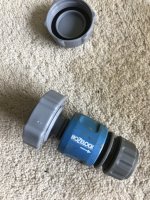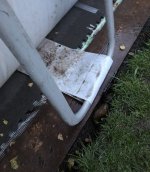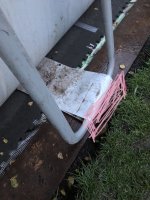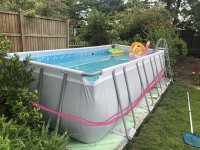Hello,
We have just put up our pool. We filled it and realised the reason the filter pump wasn’t working was because the water was not full above the intake. So added more water, a few hours later the corners on the far end popped off. And the corner where the ladder is in the picture was about 3inches lower than the rest of the pool. We let out some water to take the pressure off and to decide what to do.
The legs on that corner have sunk into the ground.
Before we set it up after lots of research I concluded that pavers were not ideal as can rip the liner. But I am pretty sure that was a massive mistake.
Our garden was unlevel so we dug down about 15cm and made a flat soil base. However after rain and splashing the soil has become mushy plus the extra weight of filling it up fully and some of the legs have sunk in.
I am going to drain it tomorrow.
Should I ….
Drain it fully
Move the pool off to the side
Place pavers under each leg location.
Make sure they are all level.
Then move the pool back onto the pavers.
And refil?
Will this spread the weight enough? Or as the ground is quite prone to water logging will I need a concrete slab?
I really want to avoid that though.
I would greatly appreciate any help,
Best Wishes, Lucy
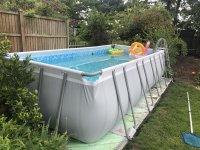
We have just put up our pool. We filled it and realised the reason the filter pump wasn’t working was because the water was not full above the intake. So added more water, a few hours later the corners on the far end popped off. And the corner where the ladder is in the picture was about 3inches lower than the rest of the pool. We let out some water to take the pressure off and to decide what to do.
The legs on that corner have sunk into the ground.
Before we set it up after lots of research I concluded that pavers were not ideal as can rip the liner. But I am pretty sure that was a massive mistake.
Our garden was unlevel so we dug down about 15cm and made a flat soil base. However after rain and splashing the soil has become mushy plus the extra weight of filling it up fully and some of the legs have sunk in.
I am going to drain it tomorrow.
Should I ….
Drain it fully
Move the pool off to the side
Place pavers under each leg location.
Make sure they are all level.
Then move the pool back onto the pavers.
And refil?
Will this spread the weight enough? Or as the ground is quite prone to water logging will I need a concrete slab?
I really want to avoid that though.
I would greatly appreciate any help,
Best Wishes, Lucy



 Well, I'm afraid at teh very least you will need paver support under each leg. That's a standard practice for stability. Emptying the pool completely would be ideal so you have room to work with. If you lowered the water down to about a foot or so, you might be able to slip a paver under each leg (maybe - still heavy), but then the pavers may not be level all around. Going that far, might as well just empty it all teh way, take your time, make sure the ground is dry, level, and pavers have good support. If the soil is naturally saturated, you might even consider digging down slightly and putting a bed of base rock under each paver for added support.
Well, I'm afraid at teh very least you will need paver support under each leg. That's a standard practice for stability. Emptying the pool completely would be ideal so you have room to work with. If you lowered the water down to about a foot or so, you might be able to slip a paver under each leg (maybe - still heavy), but then the pavers may not be level all around. Going that far, might as well just empty it all teh way, take your time, make sure the ground is dry, level, and pavers have good support. If the soil is naturally saturated, you might even consider digging down slightly and putting a bed of base rock under each paver for added support.
